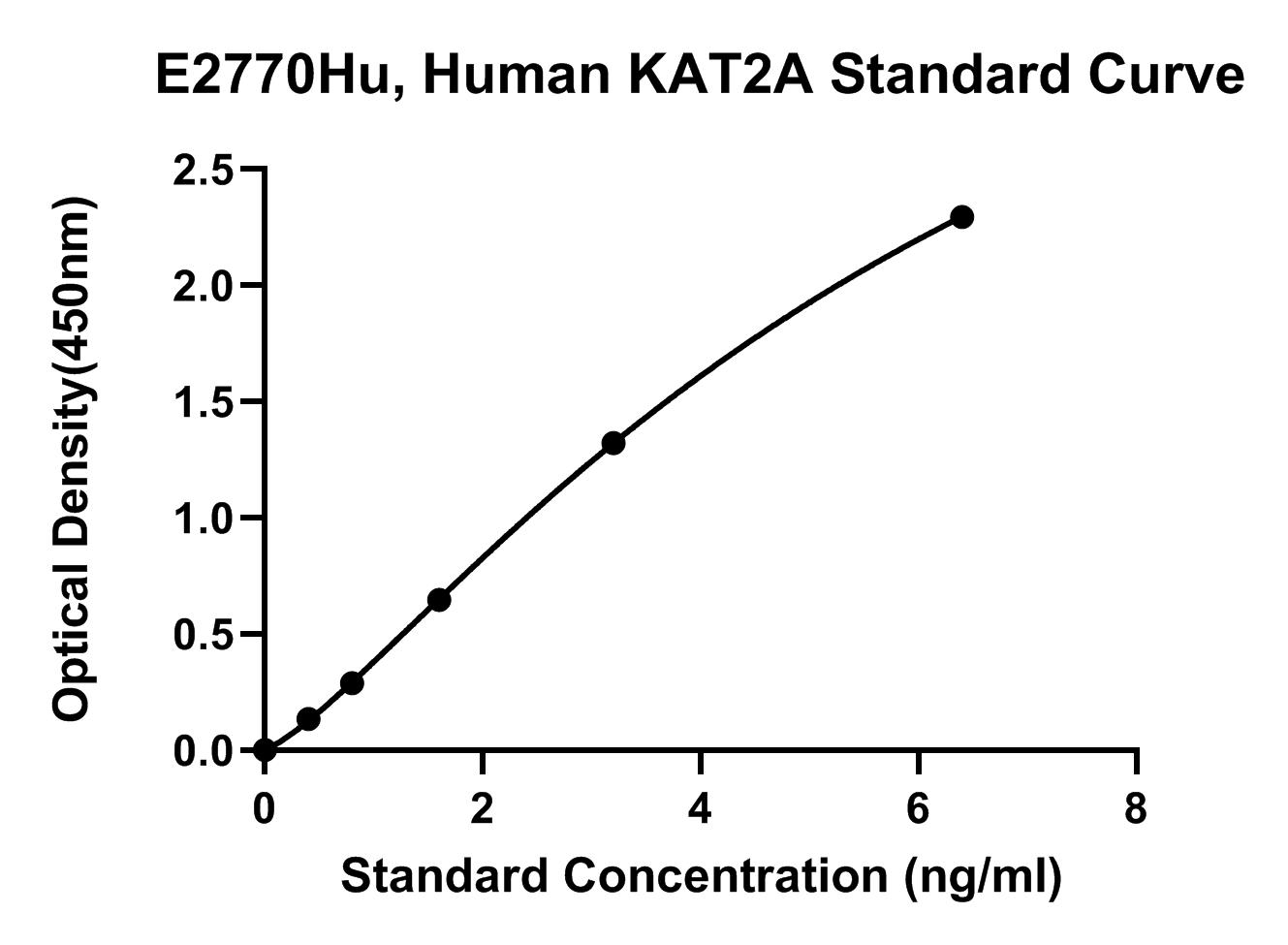Protein lysine acyltransferase that can act as a acetyltransferase, glutaryltransferase or succinyltransferase, depending on the context (PubMed:29211711).
Acts as a histone lysine succinyltransferase: catalyzes succinylation of histone H3 on ‘Lys-79’ (H3K79succ), with a maximum frequency around the transcription start sites of genes (PubMed:29211711).
Succinylation of histones gives a specific tag for epigenetic transcription activation (PubMed:29211711).
Association with the 2-oxoglutarate dehydrogenase complex, which provides succinyl-CoA, is required for histone succinylation (PubMed:29211711).
In different complexes, functions either as an acetyltransferase (HAT) or as a succinyltransferase: in the SAGA and ATAC complexes, acts as a histone acetyltransferase (PubMed:17301242, PubMed:19103755, PubMed:29211711).
Has significant histone acetyltransferase activity with core histones, but not with nucleosome core particles (PubMed:17301242, PubMed:19103755).
Acetylation of histones gives a specific tag for epigenetic transcription activation (PubMed:17301242, PubMed:19103755, PubMed:29211711).
Recruited by the XPC complex at promoters, where it specifically mediates acetylation of histone variant H2A.Z.1/H2A.Z, thereby promoting expression of target genes (PubMed:29973595, PubMed:31527837).
Involved in long-term memory consolidation and synaptic plasticity: acts by promoting expression of a hippocampal gene expression network linked to neuroactive receptor signaling (By similarity).
Acts as a positive regulator of T-cell activation: upon TCR stimulation, recruited to the IL2 promoter following interaction with NFATC2 and catalyzes acetylation of histone H3 at ‘Lys-9’ (H3K9ac), leading to promote IL2 expression (By similarity).
Required for growth and differentiation of craniofacial cartilage and bone by regulating acetylation of histone H3 at ‘Lys-9’ (H3K9ac) (By similarity).
Regulates embryonic stem cell (ESC) pluripotency and differentiation (By similarity).
Also acetylates non-histone proteins, such as CEBPB, PLK4 and TBX5 (PubMed:17301242, PubMed:27796307, PubMed:29174768).
Involved in heart and limb development by mediating acetylation of TBX5, acetylation regulating nucleocytoplasmic shuttling of TBX5 (PubMed:29174768).
Acts as a negative regulator of centrosome amplification by mediating acetylation of PLK4 (PubMed:27796307).
Also acts as a histone glutaryltransferase: catalyzes glutarylation of histone H4 on ‘Lys-91’ (H4K91glu), a mark that destabilizes nucleosomes by promoting dissociation of the H2A-H2B dimers from nucleosomes (PubMed:31542297).
(Microbial infection) In case of HIV-1 infection, it is recruited by the viral protein Tat. Regulates Tat’s transactivating activity and may help inducing chromatin remodeling of proviral genes.
Related Resources
